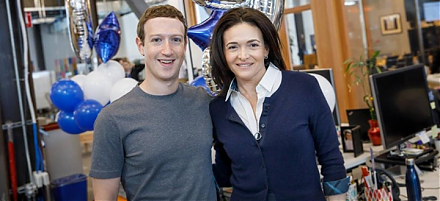

2020-04-17 07:23:00 Fri ET
fifth discipline proprietary assets customer-centric metrics flywheel okr team leaders founders senior managers eric schmidt growth rare resources reinvention disruptive innovation blue ocean sustainable profitability lean solutions jobs-to-be-done niche clayton christensen steve jobs andy grove elon musk mark zuckerberg
Clayton Christensen defines and delves into the core dilemma of corporate innovation with sustainable and disruptive advances.
Clayton Christensen (2000)
The innovator's dilemma: when new technologies cause great firms to fail
Even the best public corporations can fail. The same business practices that make companies succeed sometime can lead to their eventual failures. Harvard strategic management professor Clayton Christensen explores this paradox in response to many common corporate mistakes and failures. Well-run companies often seek to effectively manage their rare and valuable resources (corporate funds and people). This resource allocation and management can render disruptive innovations less attractive at first sight. Before well-run companies find these disruptive innovations and new markets to be attractive for better profitability, it may be too late for these companies to reach substantial market niche dominance. In order to overcome this dilemma, senior executive managers need to develop new skills and perspectives to make better long-run strategic decisions in regard to a delicate balance between sustainable and disruptive innovations. As a result, these prescient companies can consistently design core disruptive innovations to remain competitive even as new market conditions and customer demands evolve over time.
Why do great well-run companies fail?
In American corporate history, many great companies fail at a dramatic pace. Often these well-run companies cannot prioritize disruptive innovations over sustainable innovations. Sustainable innovations improve the functional performance of extant products or services; in contrast, disruptive innovations may lead to worse product or service performance in the short run, but these disruptive tech advances result in many other advantages that can ultimately prove to be simpler, smaller, cheaper, and better in the long run. The new markets for disruptive innovations are often too small for well-run companies to justify investing in these high-tech innovations. By the time the new markets become sufficiently large for well-run companies to find disruptive changes attractive for better firm expansion and profitability, some other firms may have already captured substantial market power.
Disruptive innovations that create new blue-ocean markets often originate from big well-run companies. When engineers and other subject matter experts design new prototypes, the major marketers and other team members ask a focus group of the most valuable customers for qualitative feedback. However, disruptive innovations often cannot meet initial customer needs and demands, so the focus group either fails to reach consensus or remains reluctant to express support for the prototypes. What often turns out to be the worst-case scenario is that the focus group conveys concerns and criticisms of the new prototypes because they may disrupt the extant markets for popular products and services. In a negative light, well-run companies assume that the new markets for disruptive tech advances seem small at this stage. These companies understandably cannot afford to pursue the blue-ocean strategy with disruptive innovations and lumpy investments. As a consequence, these well-run companies miss out great business opportunities not due to a lack of inventions; but, these companies lack insights into the new markets for disruptive innovations.
This lack of prescient business insights often results from business enterprises that operate in specific value networks in the operational context. Value networks exist because companies deliver products and services that happen to be components of other products and services of end-use ecosystems. Participating in a particular value network affects how companies perceive the value of disruptive innovations. In effect, this perception influences how companies assess the potential risks and rewards of investing in such disruptive tech advances. In one value network, a 50% gross margin may indeed be necessary for business profitability (e.g. software and cloud service provision). In contrast, a 25% gross margin can deliver decent profits in another value network (e.g. e-commerce and the broader retail industry). Large well-run companies are often the source of tech-savvy engineers who can see the value of disruptive innovations from a fundamental perspective. However, red tape, bureaucracy, and so on often cause frustration among these technically competent engineers due to subpar managerial decisions. Hence, tech-savvy engineers may choose to form lean startups to put their knowledge-driven inventions and business insights into practical uses.
Disruptive tech advances tend to improve with iterative continuous enhancements over time. The resultant products and services also improve in terms of both quality and quantity. Lean startups that initially sell sub-standard products into low-margin markets often eventually sell superior products in high-margin markets. Moving up most global supply chains is a natural inclination for these lean startups, whereas, moving downward is no natural inclination for big well-run companies. On balance, these predispositions perpetuate the core dilemma of disruptive innovations.
Moving up global supply chains is sound vertical integration. In reality, this vertical integration reflects good management. Also, this vertical integration helps channel higher profits that most disruptive tech advances cannot promise at the early stage. Many companies incur a broad variety of costs to deliver products and services in order to satisfy their customers. Focusing on new markets with lower margins often proves to be difficult for disruptive innovators to justify because most time-invariant costs persist over time. Also, the new markets may attract aggressive competitors with different cost structures as these competitors can operate profitably with lower margins. As big companies follow the natural upward path of least resistance, they enter new markets with high costs and barriers to entry. In this light, these big well-run companies may find it difficult to compete with lean startups that find new niche segments on the less trodden downward path.
Another difficulty pertains to the fact that middle managers often face incentives to support successful projects that can promise positive net income streams (instead of riskier investment projects with potentially high rewards). Middle managers often take responsibility for project setbacks and failures and thus become less likely to further progress within their business organizations. For this reason, these middle managers often choose to forgo risky projects with potentially high upside rewards. This rational choice reflects an inexorable career watershed when senior executive managers make tough decisions to allocate rare and valuable corporate resources such as cash funds and people. In a nutshell, sustainable investment projects that meet current customer demands receive support from middle managers; whereas, longer-term projects that help carve out new blue-ocean markets often cannot.
The Christensen concept of disruptive innovations suggests that lean startups tend to reap bigger and better profits in the nascent markets with low initial margins but substantially higher long-run rewards. For disruptive innovations to come to fruition in time, senior strategic managers should forge friendship and collaboration among top talents, engineers, designers, and tech-savvy subject matter experts to engage in blue-sky blue-ocean resource allocation for better business agility. Agile actions speak louder than words.
How can big well-run companies manage disruptive technological advances?
Big well-run companies often tend to become captive to the financial structure and organizational culture within the competitive value network. One of the bittersweet rewards of business success is the fact that such big well-run companies gradually lose both the capability and resource allocation to enter small nascent markets. A lack of senior management support and approval becomes a major impediment to blue-ocean business growth that can arise from disruptive technological advances.
Disruptive innovations often cannot create fresh business opportunities for greater market share growth at the early stage. Lean startups view disruptive innovations as viable customer-centric tech advances, whereas, large well-run companies tend to focus on their extant products and services that may become obsolete once the more customer-centric advances disrupt the hyper-competitive red-ocean industry. With disruptive innovations, first-mover advantages are enormous in the long term.
Many employees remain reluctant to risk their own careers spending valuable time and energy on new projects with so small rewards that these projects result in few benefits for large well-run companies. For this reason, strategic managers must be wise enough to establish small teams with perhaps 5 to 7 collaborators who would earnestly work together to achieve small wins. These small wins beget further wins and eventually lead to long-term sustainable profits.
As disruptive innovations often create new markets, it is hard for senior executive managers to gauge the potential size of these nascent blue-ocean markets. In this view, strategic managers cannot use the same tools for forecasting market power in a prospective sense. One solution cannot fit all plausible scenarios, so strategic managers cannot leverage information about the current sustainable innovation or extant market to assess the next nascent blue-ocean project that only lean startups can afford to manage.
In fact, many disruptive innovations turn out to be epic failures in their preliminary form. Nonetheless, some specific disruptive tech advances ultimately find practical uses and sustainable markets. It is important for lean startups to leverage sufficient resources, from conservative management to persistent capital support, to sustain the product development cycle over a sufficiently long time horizon to design viable prototypes. With disruptive innovations, strategic managers need to maintain open minds, continuous experiments, consistent plans, and so on for all partners to learn from past mistakes. As all business partners learn invaluable lessons over iterative continuous improvements, these lean enterprises can turn setbacks into small wins. Each stumbling block becomes a stepping stone, and each caterpillar has to break the cocoon to transform into a beautiful butterfly. In time, these small wins snowball into the sustainable success that helps redefine the competitive landscape with big blue-ocean first-mover advantages. At this stage, strategic managers can turn their attention from creative product design to pragmatic product implementation.
As a reasonable range of products with sufficient functionality becomes available, people often select products on the basis of reliability. When multiple products offer sufficient reliability, convenience becomes important. When several products offer commensurate functionality, reliability, and convenience, price becomes the major selection criterion. Overall, performance oversupply drives this gradual evolution.
How can large well-run companies capitalize on disruptive innovations?
When senior executive managers oversee the gradual design and development of disruptive innovations, these corporate decision-makers can benefit from following several steps. First, senior executive managers must compare the current market needs to the prevalent capacity of the core products and services that firm-specific sustainable and disruptive tech advances support. When the key decision-makers measure market needs, careful observations of distinct customer behaviors should be as important as qualitative customer views and perspectives. Customer actions speak louder than words.
Second, senior executive managers can compare how fast new products improve in contrast to extant products and services that meet market needs. If new products and services improve in quality more quickly than the extant products and services, disruptive tech innovations warrant further attention. At this stage of analysis, core decision-makers should assess whether new products and services can ever align with most market demands. Further, senior executive managers should resist the temptation to evaluate new disruptive tech advances in comparison to sustainable innovations. For instance, electric cars, autonomous vehicles, drones, and so forth have sufficient performance for many practical applications and other features that customers can find valuable worldwide. As disruptive tech advances often develop new blue-ocean markets, senior corporate leaders should envision what these new markets may become in the longer term.
Third, senior executive managers should devise a prescient business plan with key actionable insights. These insights must place an exclusive emphasis on learning from mistakes and experiments. In effect, corporate decision-makers should draw a distinction between this emphasis and subsequent business plan implementation. A key economic thread arises from this broader context that what makes disruptive innovations less viable in the extant markets often turns out to be what makes such innovations viable in the new blue-ocean markets. At this stage of analysis, senior corporate leaders should conserve resources such as capital investment funds and people for broader organizational support through myriad iterations of preliminary prototype design and development. The ultimate prototype often has to be simple, reliable, convenient, and cost-effective. Several iterative continuous improvements help shine fresh light on the practical uses of disruptive innovations.
At this specific phase of new product development, it is time for corporate decision-makers to establish lean and agile independent organizations to learn lessons from prior mistakes and iterative experiments. These independent organizations should not depend heavily on parent companies for resources; rather, these independent organizations should be small enough to fail forward with iterative enhancements. These iterative enhancements should be commensurate with the uncertain size of new blue-ocean markets. In due time, these lean independent organizations must strive to become cash-positive for long-run sustainable business development.
With disruptive innovations, the key Christensen flash of genius suggests that most corporate leaders cannot underestimate the importance of sustainable innovations because these positive incremental changes remain critical to near-term business success. It is important for senior executive managers to preserve the core values, processes, and resources that collectively contribute to sustainable tech advances. At any rate, business leaders need to be cognizant that overcoming disruptive tech obstacles and challenges requires different capabilities, thought experiments, and managerial mechanisms. The law of inadvertent consequences counsels caution.
This analytic essay cannot constitute any form of financial advice, analyst opinion, recommendation, or endorsement. We refrain from engaging in financial advisory services, and we seek to offer our analytic insights into the latest economic trends, stock market topics, investment memes, personal finance tools, and other self-help inspirations. Our proprietary alpha investment algorithmic system helps enrich our AYA fintech network platform as a new social community for stock market investors: https://ayafintech.network.
We share and circulate these informative posts and essays with hyperlinks through our blogs, podcasts, emails, social media channels, and patent specifications. Our goal is to help promote better financial literacy, inclusion, and freedom of the global general public. While we make a conscious effort to optimize our global reach, this optimization retains our current focus on the American stock market.
This free ebook, AYA Analytica, shares new economic insights, investment memes, and stock portfolio strategies through both blog posts and patent specifications on our AYA fintech network platform. AYA fintech network platform is every investor's social toolkit for profitable investment management. We can help empower stock market investors through technology, education, and social integration.
We hope you enjoy the substantive content of this essay! AYA!
Andy Yeh
Chief Financial Architect (CFA) and Financial Risk Manager (FRM)
Brass Ring International Density Enterprise (BRIDE) © 2013-2023
Do you find it difficult to beat the long-term average 11% stock market return?
It took us 20+ years to design a new profitable algorithmic asset investment model and its attendant proprietary software technology with fintech patent protection in 2+ years. AYA fintech network platform serves as everyone's first aid for his or her personal stock investment portfolio. Our proprietary software technology allows each investor to leverage fintech intelligence and information without exorbitant time commitment. Our dynamic conditional alpha analysis boosts the typical win rate from 70% to 90%+.
Our new alpha model empowers members to be a wiser stock market investor with profitable alpha signals! The proprietary quantitative analysis applies the collective wisdom of Warren Buffett, George Soros, Carl Icahn, Mark Cuban, Tony Robbins, and Nobel Laureates in finance such as Robert Engle, Eugene Fama, Lars Hansen, Robert Lucas, Robert Merton, Edward Prescott, Thomas Sargent, William Sharpe, Robert Shiller, and Christopher Sims.
Follow AYA Analytica financial health memo (FHM) podcast channel on YouTube: https://www.youtube.com/channel/UCvntmnacYyCmVyQ-c_qjyyQ
Follow our Brass Ring Facebook to learn more about the latest financial news and fantastic stock investment ideas: http://www.facebook.com/brassring2013.
Free signup for stock signals: https://ayafintech.network
Mission on profitable signals: https://ayafintech.network/mission.php
Model technical descriptions: https://ayafintech.network/model.php
Blog on stock alpha signals: https://ayafintech.network/blog.php
Freemium base pricing plans: https://ayafintech.network/freemium.php
Signup for periodic updates: https://ayafintech.network/signup.php
Login for freemium benefits: https://ayafintech.network/login.php
If any of our AYA Analytica financial health memos (FHM), blog posts, ebooks, newsletters, and notifications etc, or any other form of online content curation, involves potential copyright concerns, please feel free to contact us at service@ayafintech.network so that we can remove relevant content in response to any such request within a reasonable time frame.
2018-01-07 09:33:00 Sunday ET

Zuckerberg announces his major changes in Facebook's newsfeed algorithm and user authentication. Facebook now has to change the newsfeed filter to prior
2019-10-19 16:35:00 Saturday ET

European economic integration seems to have gone backwards primarily due to the recent Brexit movement. Brexit, key European sovereign debt, and French and
2018-11-21 11:36:00 Wednesday ET

Apple upstream suppliers from Foxconn and Pegatron to Radiance and Lumentum experience sharp share price declines during the Christmas 2017 holiday quarter.
2019-08-22 11:35:00 Thursday ET

Fundamental factors often reflect macroeconomic innovations and so help inform better stock investment decisions. Nobel Laureate Eugene Fama and his long-ti
2018-10-30 10:41:00 Tuesday ET

Personal finance author Ramit Sethi suggests that it is important to invest in long-term gains instead of paying attention to daily dips and trends. It
2018-05-21 07:39:00 Monday ET

Dodd-Frank rollback raises the asset threshold for systemically important financial institutions (SIFIs) from $50 billion to $250 billion. This legislative